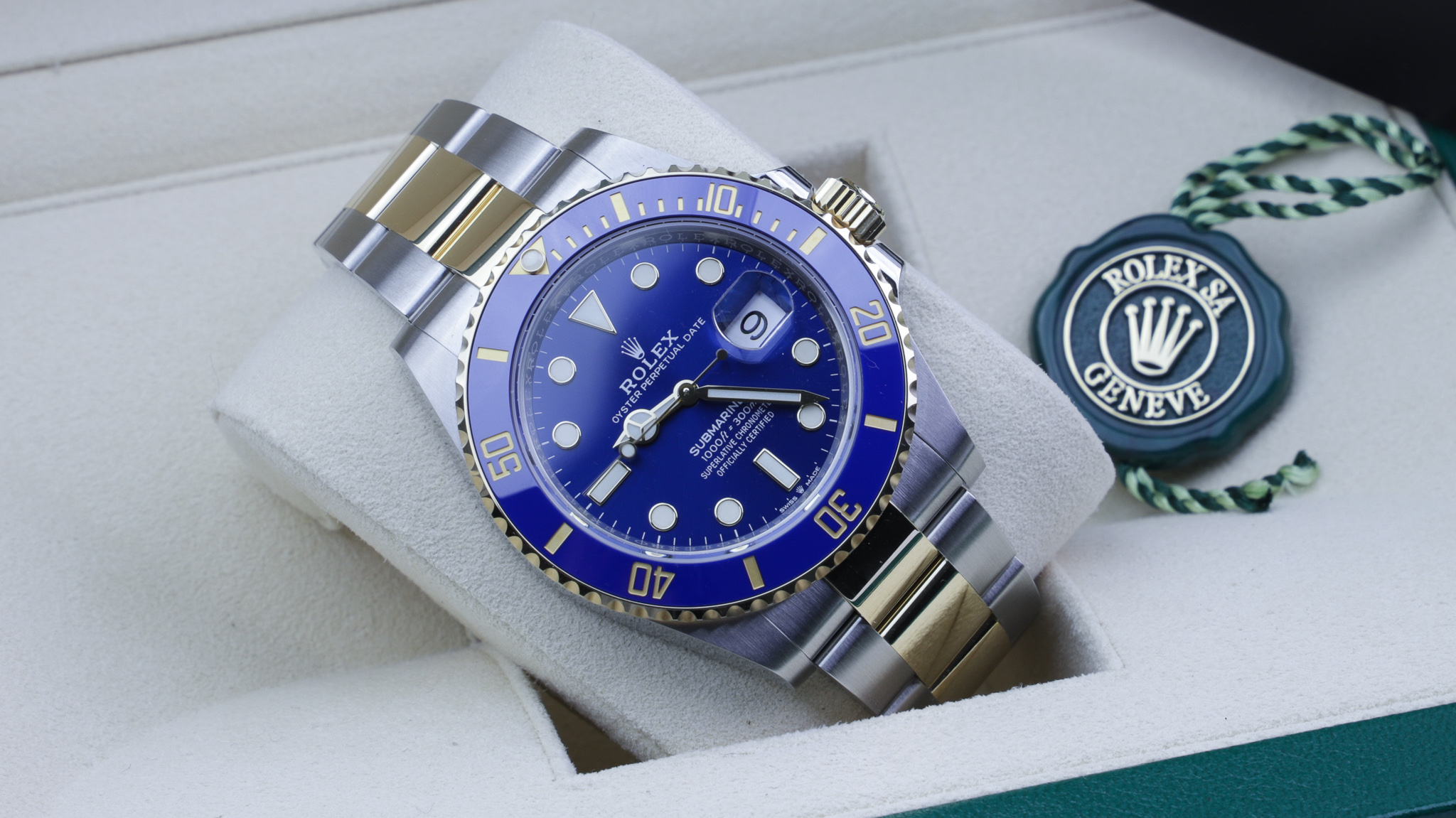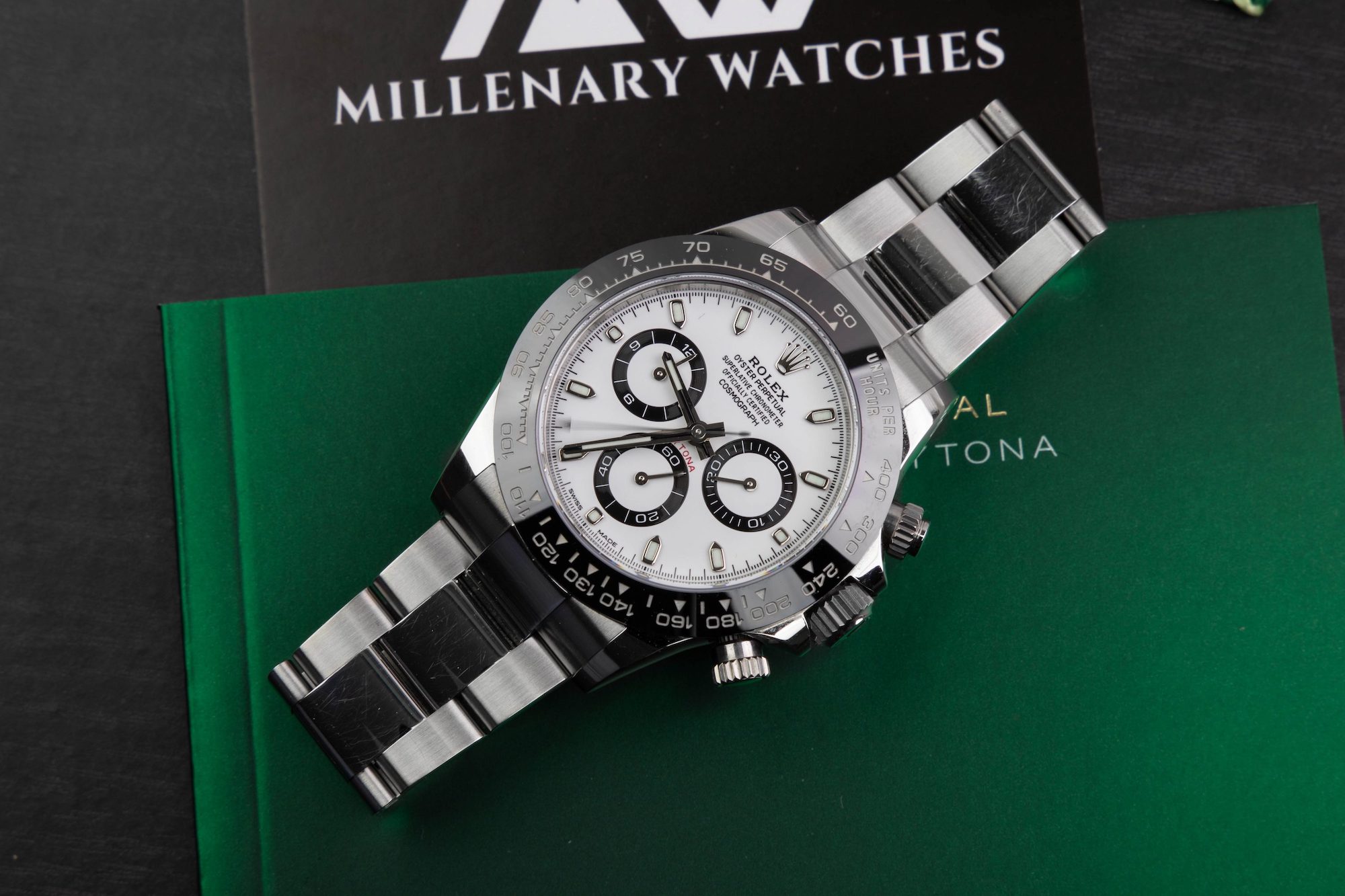
Rolex Anti-Reflective Coating – Complete Guide
There is a myth that a lot of people tend to believe which is that Rolex doesn’t use anti-reflective coating for its watches. In this article, we will set things straight and go through everything there is to know about Rolex anti-reflective coatings.
What is an anti-reflective coating?
Before we begin, let’s sort out the basics first.
An anti-reflective coating is exactly what it sounds like. It is a thin coating on the crystal of a watch whose purpose is to reduce reflections and glare. Ultimately, this is meant to make it easier to read the time, even in bright conditions when the sun is shining.
Anti-reflective coatings have been used in the watch industry for a long time. And the vast majority of watch brands use them. Anti-reflective coatings are really effective and important for reducing glare and making it easier to read the time, so why wouldn’t watch brands use it? In particular a brand like Rolex that is all about functionality?

Does Rolex use anti-reflective coating?
Yes, Rolex does use anti-reflective coating on its watches. Either on the inside of the crystal or on both sides. Naturally, anti-reflective coating on both sides will be more effective against glare than if it is only applied to one side. One of the reasons why a lot of people believe that Rolex doesn’t use the anti-reflective coating is that Rolex has been slow in implementing it for all of its models. So with that said, if you have an older Rolex watch, it’s not certain that yours has it.
Rolex first started to use anti-reflective coating (AR coating) on the cyclops of its watches in around 2005. But note that this is just an estimate as Rolex has not officially confirmed when they began using it. Considering many of its competitors began using it for the crystals of its watches, and because the actual crystal didn’t have it, people have mistakenly believed that Rolex has never used anti-reflective coating. With that said, all Rolex watches that feature a cyclops have an anti-reflective coating both on the underside and on the upper side of the cyclops.
For a long time, people complained about the lack of anti-reflection treatment on the crystal of Rolex watches. When compared to other brands like Omega, the difference is noticeable when you put watches with and without AR-coating side-by-side. And whilst the AR coating on the cyclops makes a difference, it doesn’t change the fact that the crystal itself lacks it.
And it has indeed taken some time for Rolex to implement the anti-reflective coating on some of its most important models. It would take until 2020 that the Submariner line would receive anti-reflective coating for the crystal. During this year, Rolex also introduced the anti-reflective coating to a few other models as well, including the new generation Oyster Perpetuals.
Far from all models in the Rolex catalog have anti-reflective coating for the crystal today, but 2020 was an important step for Rolex. With the careful introduction of the AR coating to some models, we can expect that Rolex will roll out the AR-coated sapphire crystals for more models, perhaps even the whole collection of watches, in the years and the decade to come.

Rolex anti-reflective coating crystal etching
Rolex actually has a way of denoting what type of anti-reflective coating a watch has – and if it has it. Namely via the laser-etched crystal at 6 o’clock. As you can see in the chart below, the crystal is etched in slightly different ways depending on which type of AR-coating it has:

- Watches without anti-reflective coating or with anti-reflective coating on the cyclops have one circle inside the laser-etched crystal
- Watches with anti-reflective treatment on the underside of the crystal have two circles inside the laser-etched crystal
- Watches with anti-reflective coating on the top and on the underside have two circles and a horizontal line in the center
Which Rolex watches have anti-reflective coating?
For the actual crystals of its watches, the vast majority of watches still lack anti-reflective coating on the crystal. This is with the exception of watches with cyclops that have the treatment both on the upper- and underside. For the cyclops, Rolex has used the anti-reflective coating since around 2005.
But when it comes to the actual crystals, Rolex has a long way to go. But with the addition of anti-reflective crystals to the Oyster Perpetual and Submariner lines in 2020, it indicates that Rolex is either working to actively implement it into all models in the future or that they first want to try it out first before rolling it out to all models. Several of the models that Rolex has released since 2020 have had anti-reflective coating. This includes the Explorer 124270 that was released in 2021.

Rolex seems to be reluctant for some reason to add the anti-reflective coating to the watches that have anti-reflective coating on the cyclops.
Today, several of the models that people don’t think have AR-coating actually do. This includes:
- All the Daytona models
- Explorer 214270
- All Oyster Perpetual models
- Air-King 126900 (new 2022 model)
- DeepSea Sea-Dweller 126660
With the above in mind, it is clear that all the new models that do not have the cyclops that have been released in recent years have gotten crystals with anti-reflective coatings. The question is when Rolex will also implement it for the watches with cyclops.
Most of the Rolex watches that have anti-reflective treatment on the crystal have it only on the underside. The exception is the Cellini which has it on both sides. An important reason for this is that if the crystal is accidentally scratched, the crystal may not be scratched (as it is very hard), but the anti-reflective coating may come off.
Bear in mind that Rolex builds its watches to last a lifetime. And if the anti-reflective coating starts coming off in multiple places, it will start becoming noticeable and not look very good. This is why it may be a wiser move to only use anti-reflective treatment on the inside of the crystal, even though the anti-reflective properties don’t become as good as if you would use it on both sides of the crystal.

One theory about why Rolex hasn’t seemed to be very interested in AR coating is that the watch tends to sparkle and shine more. When you apply an anti-reflective coating, it improves the legibility but it detracts from the sparkle. So this could be an explanation for why Rolex may not have the intention of adding the AR coating to certain watches.
In particular, those that are built more like pieces of jewelry rather than sports watches. This includes models such as the Day-Date and the Datejust. With that said, only time will tell if this is actually a reason, and if that means that Rolex will not add anti-reflective crystals to the watches that have cyclops. One exception, however, is the Submariner. This shows that Rolex is both able and willing to apply the anti-reflective treatment to watches with cyclops.





On the Daytona’s any idea if they used AR as far back as 2007 like on the racing dial models particularly the grey racing dial with the numbers around dial and red sundial rings and sun dial hands? If they did and on more modern ones is it colored AR or non colored? If color what color? Thx
Hi,
Whether or not AR was used will not depend on the dial used. It will depend on the production year and the model. Rolex’s AR is non-colored. Rolex began using anti-reflective crystals for the Daytona around 2017.
Kind regards,
Millenary Watches
I have a sub41 black ceramic with date card dated March, 2023 and it has a blue tint via ar coating for the cyclops. Now I know this used to be an instant giveaway for fakes (as Rolex used to ONLY make colorless AR coating) but I’ve been seeing more black subs 41 date (this model and GMT Rootbeer, all 2022/23+) with this blue hue and sometimes brown hues.
No one seems to have a definitive answer- can any Rolex gurus comment on this?
Thanks
Hi,
In some angles, the AR coating can look blue so it’s not really a good tell of a fake watch. It’s easier to spot a fake watch via the magnification of the cyclops which is usually much lower than it should be on many fake Rolex watches.
Kind regards,
Millenary Watches